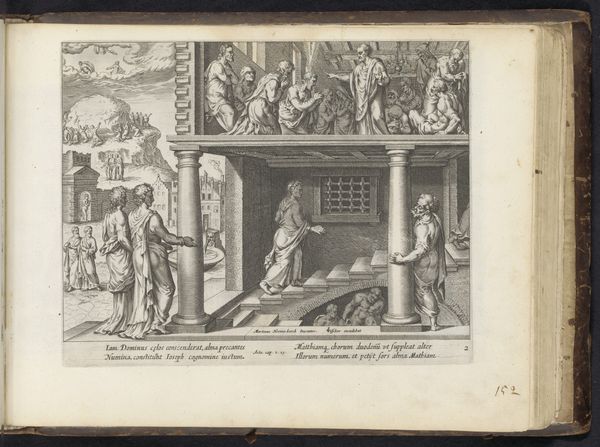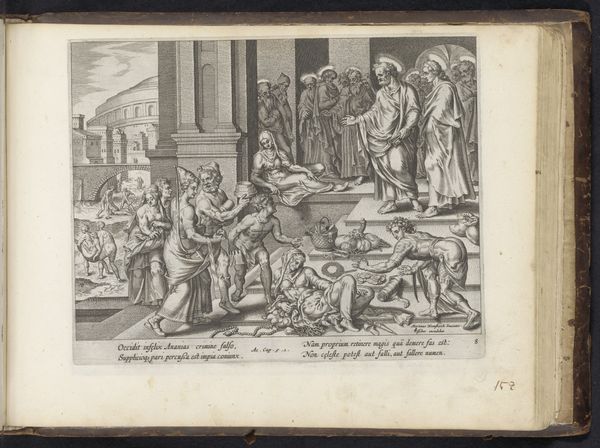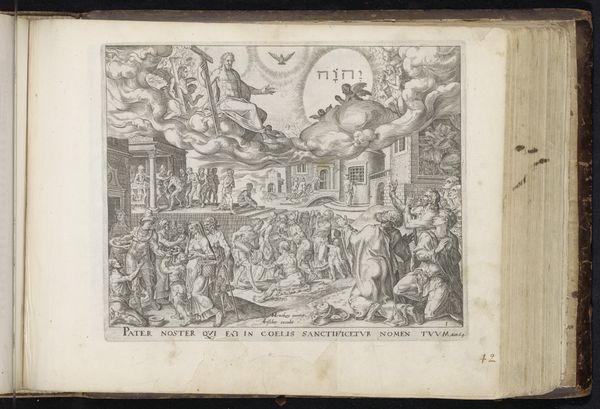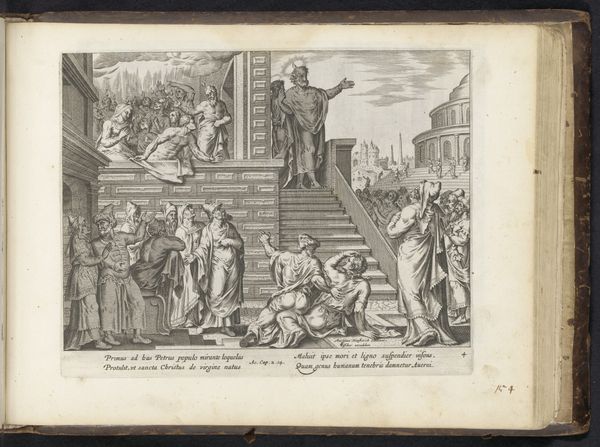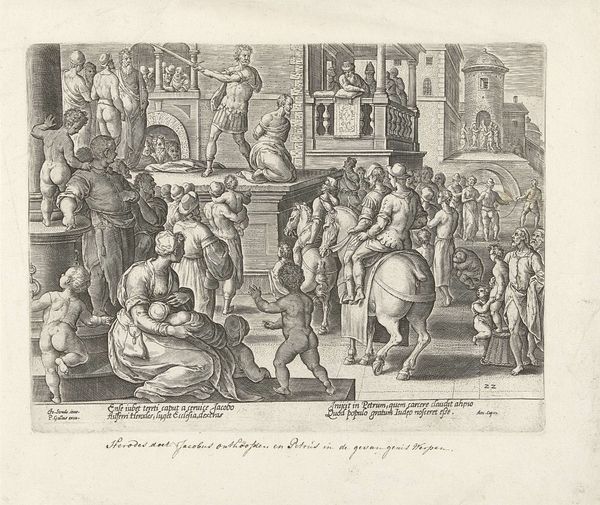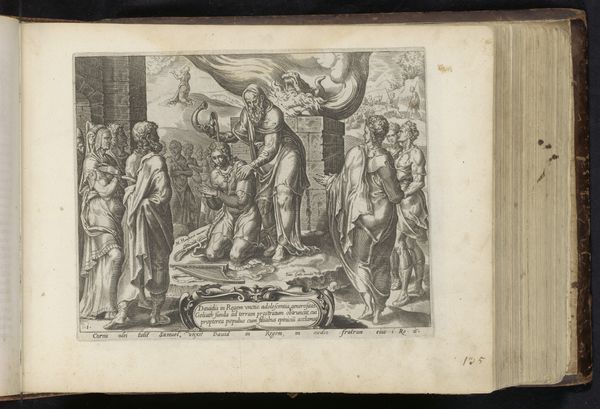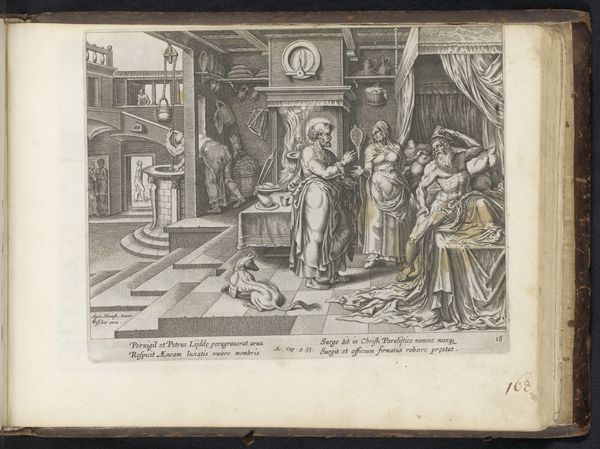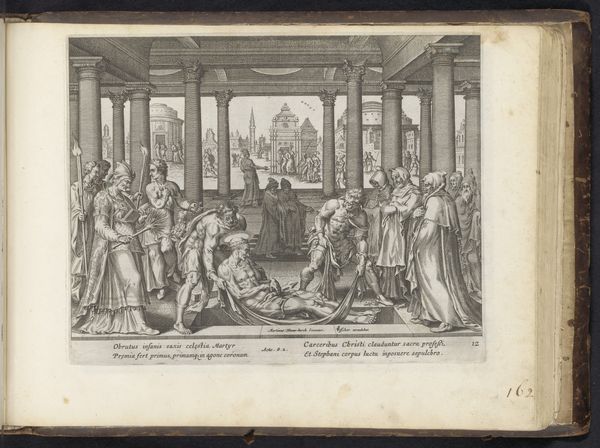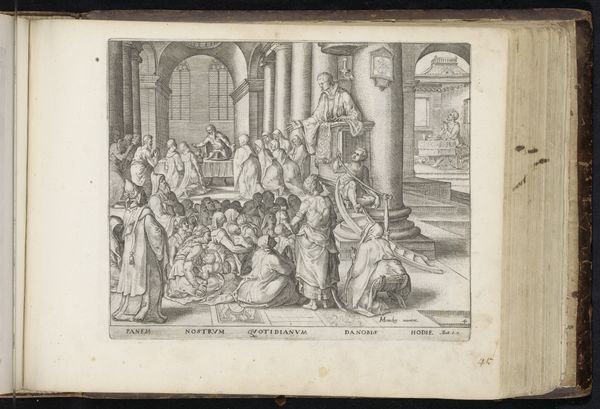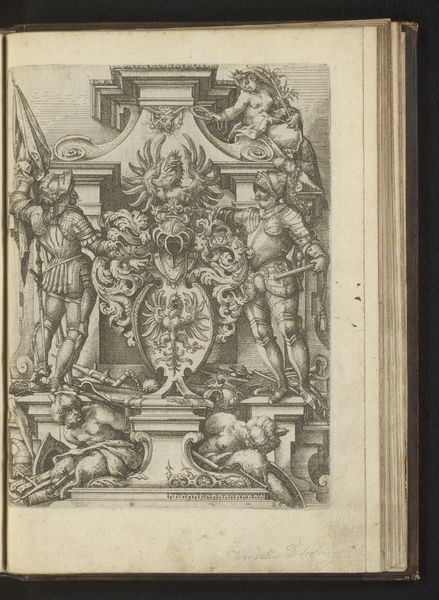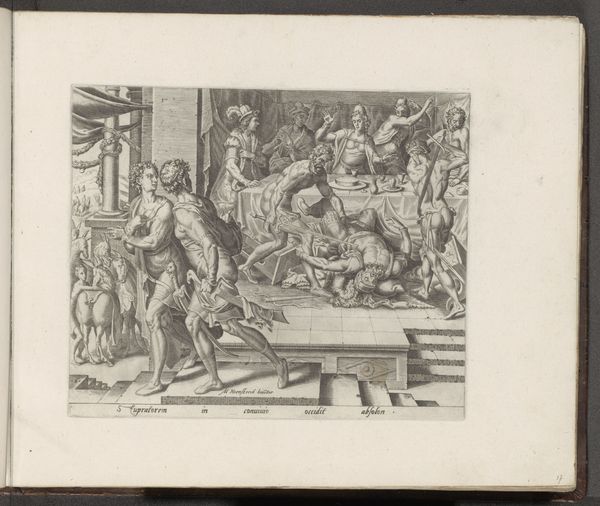
print, paper, engraving
#
narrative-art
# print
#
mannerism
#
figuration
#
paper
#
coloured pencil
#
history-painting
#
engraving
Dimensions: height 211 mm, width 268 mm
Copyright: Rijks Museum: Open Domain
Editor: Here we have an engraving, *The Beheading of Saint James the Greater*, dating from 1643 to 1646. The scene is brimming with figures and architectural details, depicting a violent biblical event. I'm struck by how public the execution is, like a spectacle staged for the crowd. What can you tell me about its historical context? Curator: That’s a crucial observation. The “publicness” speaks directly to the role prints played in disseminating information and reinforcing religious and political power. Engravings like this one circulated widely. Consider the function of imagery during the Counter-Reformation. What did these images need to achieve in the public imagination? Editor: Maybe they aimed to inspire faith, but also to instill fear and obedience? Curator: Precisely! The graphic depiction of martyrdom served both purposes. Now, consider the style: note the exaggerated anatomy, the dynamic poses, and the theatrical setting. This reflects the influence of Mannerism, a style that emphasized artifice and emotion over naturalism. Do you notice any specific details that seem designed to elicit a strong emotional response? Editor: The foregrounded figures, maybe, and all those children! They really draw the eye and tug at the heartstrings. It definitely enhances the narrative. Was there any particular patron that might have supported production of such a politically charged work? Curator: The Church was a very common patron for images such as this. Remember, visual propaganda played a critical role in asserting Catholic authority during a period of immense religious and political turmoil. What broader narrative about faith and power do you think the print intends to convey? Editor: That martyrdom and devotion ultimately triumph, perhaps? Thanks, seeing this as a tool for disseminating political or religious ideas provides valuable perspective. Curator: Indeed. Examining art as a form of visual rhetoric unveils so much about the period in which it was created. It's been a fruitful discussion!
Comments
No comments
Be the first to comment and join the conversation on the ultimate creative platform.
